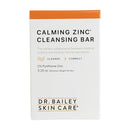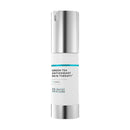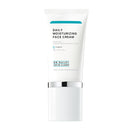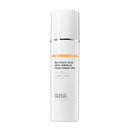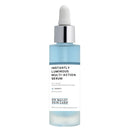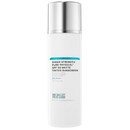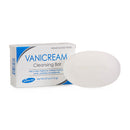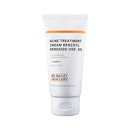What is Perioral Dermatitis?

Most people with perioral dermatitis come in to see me having no idea what has gone wrong with their skin. This skin problem is not that uncommon, but it is very confusing.
If you or someone you know has had a strange skin problem around their mouth (perioral!), around their nose, or even around their eyes, it may be this frustrating skin problem. In spite of the name, this rash does not discriminate which facial structure it likes to crop up around.
Most patients who come to see me about this itchy and stingy rash around the mouth, nose or eyes have seen other physicians, tried numerous topical creams and medicines and the rash gets worse and worse. Some of these treatments can actually worsen the rash. It’s important to know about the diagnosis and get the right treatment or this dermatitis can actually leave scarring and post inflammatory pigmentation or erythema (brown or red marks that can last a long time).
Perioral dermatitis is one of the skin conditions that has a high likely hood to come back. Often after the rash is cleared up there is a long remission, but at some point, it is not uncommon to suffer from the problem again. Understanding perioral dermatitis, knowing what triggers it for your complexion and what gets rid of it, are important.
The treatment of perioral dermatitis is as surprising as the rash. We don’t know the exact cause of of this vexing skin problem, but there are ways to get rid of it.
Understanding Perioral Dermatitis
Perioral dermatitis is a rash on the facial skin that usually happens around the mouth and lips, as the name implies. However, it can also occur around the nose or eyelids so the “oral” term is not entirely accurate. When it occurs around the eyes, we call it "periocular perioral dermatitis." You have to love the terminology work-around! The important point is that regardless of which facial “orifice” the dermatitis starts with, the characteristics of, and experience you have with, the rash will be similar.
What does perioral dermatitis look like?

Perioral dermatitis looks like a combination of a dermatitis and acne pustules or even small acne-like blisters.
The dermatitis is usually bright red and the pimples may sting. Some sources say there is no itching, but that is not my experience or the experience of the many patients that I have treated with this skin problem. We have experienced itching with this vexing skin problem – yes, I have had it several times.
The skin rash is usually grouped together and gradually increases to involve more skin. It often starts at the angles of the lips, opening of the nose or corners of the eyes. It eventually spreads out from there.
If not diagnosed and treated early, perioral dermatitis can become “granulomatous,” meaning the red bumps get really deep and stubborn. This form is at higher risk for scarring or leaving lasting marks on the skin.
How do you know if you have perioral dermatitis or something else?
Perioral dermatitis is not the only rash that can surround the skin around your mouth, nose or eyes. You need to know what the other common causes of a red rash are around the mouth, eyes or nose.
Seborrheic dermatitis can occur in the nasolabial folds that run from the creases of your nose to the sides of your lips. In my experience, many people with perioral dermatitis also have seborrheic dermatitis (as evidenced by scale or redness along the creases of the nose).
You can also have an allergic contact dermatitis around your lips that will look like a rash encircling your mouth. It can happen around your eyelids too.

The skin around the openings of your nose can develop chapping when you frequently blow your nose. It can also be prone to impetigo because the germ, Staph aureus, can reside in your nose. The best treatment always starts with an accurate diagnosis, so when in doubt, see your doctor.
Who gets perioral dermatitis?
Anyone can develop perioral dermatitis, though it is not that common.- Under 1% of people in the U.S. develop perioral dermatitis.
- 90% of the people who get perioral dermatitis are women.
- Most people who have perioral dermatitis are 20-45 years old.
7 causes of perioral dermatitis.
The cause of perioral dermatitis is unknown. However, there are some associations:
1. Using cortisone cream on the face can lead to perioral dermatitis.
The cortisone creams most likely to cause perioral dermatitis are the halogenated corticosteroids. These are cortisone medicines that have special structures that include halogen atoms like chlorine or fluorine, along with the cortisone part of the molecule that makes up the medicine. They are prescription cortisones, and it is one of several important reasons why using prescription cortisone on the face needs to be medically-supervised and done with care.
2. The use of cortisone inhalers for asthma can lead to perioral dermatitis.
3. Fluoride in dental products have also been linked to perioral dermatitis.
We take people off fluoride-fortified dental care products when they have perioral dermatitis.
4. Other possible links have been made to an ingredient in skin care products called isopropyl myristate.
5. Even the use of petrolatum or paraffin have been potentially associated with causing perioral dermatitis.
6. Candida yeast and fusobacteria type of bacteria are seen on skin with perioral dermatitis.
7. Rosacea and perioral dermatitis share some similar features, though the areas of skin involved are different.
Demodex mites play a role in rosacea. For this reason, demodex mites deserve consideration in the presence of perioral dermatitis if the condition persists or recurs.
With all these connections, however, we still don’t really know why causes this red, itchy, disfiguring facial skin problem.
How do you treat perioral dermatitis?
Every case of perioral dermatitis is different.
The first treatment step is to remove all irritating skin care products and medicines.
These include acne and anti-aging medicines like Retin A, which can inflame the skin and cause more irritation.
The second step is to create a very gentle and non-irritating skin-care routine that allows the skin to heal.
This involves using gentle cleansers and moisturizers until the skin heals. It is important to understand that the areas of skin with active dermatitis have a broken skin barrier and are easily irritated – much like putting lemon juice on a cut. It is important to avoid the use of harsh soaps, rubbing alcohol or anything on the skin that stings or is potentially irritating.

To heal perioral dermatitis, it is important to create a basic skin care routine that does not irritate or provoke further worsening of perioral dermatitis. Dermatologist Dr. Cynthia Bailey
Dermatologist's tips for a skin care routine to heal perioral dermatitis.
You always get the best result with your skin care when you use a Complete Skin Care Routine™ that provides everything your skin needs to stay healthy. That means selecting compatible and supportive products for the 4 essential skin care steps that I call: CLEANSE CORRECT HYDRATE PROTECT™. Here are the products that I use in my practice for my patients suffering from this skin problem. They have helped my internet customers too:
I suffered for so many months and your products are the only thing that saved me! I had really bad perioral dermatitis around my nose with major redness swelling and pustule bumps that would just not go away. I had literally tried everything over the counter as well as Elidel prescription from a dermatologist. The Elidel would work for a few days and it would get bad again. Luckily, I googled products for perioral dermatitis and your website came up.I wound up getting the Extremely Gentle Cleanser, Calming Zinc soap, Green Tea Antioxidant Skin Therapy, Daily Moisturizer, and Sheer Strength Sunscreen. All have been amazing. The routine doesn’t clog pores and it’s non greasy. I have also bought some of the loose powder face makeup. I think the drug store sunscreens with oxybenzone I’m allergic to. Your products are amazing and I can’t say enough good things about them. A.M.
![]()
CLEANSE: I usually have my patients wash their face with a pH balanced hypoallergenic cleanser like VaniCream Soap or my Extremely Gentle Foaming Facial Cleanser. They then rinse the cleanser off entirely with warm-to-tepid water and gently pat the skin dry. This is done twice daily.
CORRECT: After cleansing, I usually have them apply my Green Tea Antioxidant Skin Therapy because the green tea EGCG polyphenol antioxidants help to soothe inflammation. We then apply treating products layered on top of this more water-based product. It is important to note that the rest of the face must be cared for gently, too, because products warm on the skin and migrate.
HYDRATE: I typically have my patients use my Daily Face Cream as an all-over facial moisturizer.
PROTECT: I recommend my Sheer Strength Pure Physical Matte Tinted SPF 30 sunscreen because the subtle tinting will help to hide the redness while your skin heals. Remember, sun protection is important to help prevent hyperpigmentation of the severely-inflamed skin.
Get all the products you need for your gentle skin care routine to help heal perioral dermatitis in my Complete Skin Care Kit. These products help support healthy skin for even the most sensitive skin and sensitive skin problems.
What topical medicines and medicated creams do dermatologists use to treat perioral dermatitis?
Along with a basic gentle skin care routine to help skin heal, dermatologists use topical medicines to treat the involved areas of skin suffering from active dermatitis. These are added to the skin care routine above. I typically instruct my patients to apply them before or after the Green Tea.
If the inflammation is severe, we additionally layer a non-halogenated/low-potency cortisone cream like hydrocortisone butyrate or over-the-counter hydrocortisone. This needs to be supervised by a doctor because these topical medicines are used for many weeks to months. We aim to stop the cortisone as soon as possible to prevent side effects. As mentioned before, cortisone has side effects and requires medical supervision. For example, using cortisone cream around the eyes can cause permanent eye damage. It can also cause skin thinning.
Oral antibiotics may be used in severe cases of perioral dermatitis. These medicines include tetracycline, doxycycline and others.
These are the most time-tested treatments for perioral dermatitis.
In my 30+ years of practicing dermatology and treating many people with perioral dermatitis, this approach consistently works. I have never needed to resort to some of the other treatments described in the medical literature which include: photodynamic therapy, isotretinoin and pimecrolimus. These treatments are either potentially dangerous and/or irritating options for this condition.Does perioral dermatitis come back?
Yes, this skin problem has a high recurrence rate. But it is often not for a year or two after the skin has cleared. This means that some people are prone to perioral dermatitis, especially young adult women. To maintain remission, I typically have my dermatology patients continue using their anti-yeast medicine and topical antibiotic for two to four months after the rash has cleared. We then gradually taper off the antibiotic, followed by the anti-yeast medicine over another month or two. At the first signs of recurrence, we resume the use of these topical medicines as a prevention.
To prevent relapse of perioral dermatitis in my dermatology practice I often use Calming Zinc face wash once a day. This soap is fortified with pyrithione zinc, an ingredient known to help fight skin yeast. It can irritate active perioral dermatitis so wait until the rash has cleared up before using Calming Zinc. I have people apply Green Tea Antioxidant Skin Therapy after washing twice daily. They top this with a really good moisturizer. Get all three of these products in my Facial Flaking and Redness Solution Kit.
I created my Rosacea Therapy Kit with everything I've mentioned here including a great sunscreen - the Complete Skin Care Kit plus Calming Zinc. This is always the skin care I put my patients on after their perioral dermatitis is in remission in the hopes that we prevent recurrence. It can be used to help clear up perioral dermatitis too and is what A.M used above.
Other medicines reported to help include adapalene and azelaic acid. Again, I have not needed to use these potentially-irritating medicines.
At times, I have had patients also use permethrin cream nightly for a week every month to control demodex mites. This is an entirely off-label use of this medicine designed to treat scabies. Soolantra is another medicine for demodex mites, but it is very expensive, and that makes it unpopular in my practice.
Pimicrolimus has been reported to help maintain remissions, but as mentioned above, in my experience, I don’t find it necessary to use this medicine to treat perioral dermatitis.
References:
Andrews'Diseases of the Skin: Clinical Dermatology, Twelfth Edition
Maeda A, Ishiguro N, Kawashima M. The pathogenetic role of rod-shaped bacteria containing intracellular granules in the vellus hairs of a patient with perioral dermatitis: A comparison with perioral corticosteroid-induced rosacea, .Australas J Dermatol. 2016 Aug;57(3):225-8. doi: 10.1111/ajd.12344. Epub 2015 Apr 20.
Ljubojević S, Lipozencić J, Turcić P. Perioral dermatitis. Acta Dermatovenerol Croat. 2008;16(2):96-100.
Tolaymat L, Hall MR. Perioral Dermatitis. [Updated 2020 May 3]. In: StatPearls [Internet]. Treasure Island (FL): StatPearls Publishing; 2020 Jan-.
Author: Dr. Cynthia Bailey M.D. is a Board Certified dermatologist practicing dermatology since 1987. She has done well over 200,000 skin exams during her career and authors the longest running physician written skin health blog in the world.
.


